
Cunard Line is a British cruise line based at Carnival House at Southampton, England, operated by Carnival UK and owned by Carnival Corporation & plc. Since 2011, Cunard and its three ships have been registered in Hamilton, Bermuda.

The Blue Riband is an unofficial accolade given to the passenger liner crossing the Atlantic Ocean in regular service with the record highest speed. The term was borrowed from horse racing and was not widely used until after 1910. Traditionally, the record is based on average speed rather than passage time because ships follow different routes. Also, eastbound and westbound speed records are reckoned separately, as the more difficult westbound record voyage, against the Gulf Stream and the prevailing weather systems, typically results in lower average speeds.
The International Navigation Company (INC) was a Philadelphia-based holding company owning 26 ships totaling 181,000 tons and carried more passengers than either Cunard or White Star, when the company was reorganized as International Mercantile Marine in 1902. INC was formed in 1871 with the backing of the Pennsylvania Railroad to operate foreign flagged vessels on transatlantic routes to Philadelphia. Clement Griscom, the company's general manager, entered into an agreement with the Belgian Government to establish the Red Star Line to operate a mail service out of Antwerp to Philadelphia and New York. This subsidiary would provide most of the company's profits for the next 30 years.

The Inman Line was one of the three largest 19th-century British passenger shipping companies on the North Atlantic, along with the White Star Line and Cunard Line. Founded in 1850, it was absorbed in 1893 into American Line. The firm's formal name for much of its history was the Liverpool, Philadelphia and New York Steamship Company, but it was also variously known as the Liverpool and Philadelphia Steamship Company, as Inman Steamship Company, Limited, and, in the last few years before absorption, as the Inman and International Steamship Company.
William Howe Guion I (1817–1884) headed the Williams and Guion Black Star Line.
John Stanton Williams with Stephen Barker Guion owned and operated the Williams & Guion Black Star Line.

Abyssinia (1870) was a British mail liner originally operated by the Cunard Line on the Liverpool–New York route. She later served the Guion Line on the same route and the Canadian Pacific Line in the Pacific. In December 1891, Abyssinia was destroyed mid-Atlantic without loss of life by a fire that started in her cargo of cotton, further highlighting the danger in carrying both cotton and passengers on the same ship.
The Collins Line is the common name for the American shipping company started by Israel Collins and then built up by his son Edward Knight Collins, formally called the New York and Liverpool United States Mail Steamship Company. Under Edward Collins' guidance, the company grew to be a serious competitor on the transatlantic routes to the British Cunard shipping company.

The Arizona was a record breaking British passenger liner that was the first of the Guion Line's Atlantic Greyhounds on the Liverpool-Queenstown-New York route. One nautical historian called Arizona "a souped up transatlantic hot rod." Entering service in 1879, she was the prototype for Atlantic express liners until the Inman Line introduced its twin screw City of New York in 1889. The Arizona type liner is generally considered as unsuccessful because too much was sacrificed for speed. Laid up in 1894 when Guion stopped sailings, Arizona was sold four years later and briefly employed in the Pacific until she was acquired by the US Government for service in the Spanish–American War. As the U.S. Navy's Hancock she continued trooping through W.W.I. and was finally scrapped in 1926.
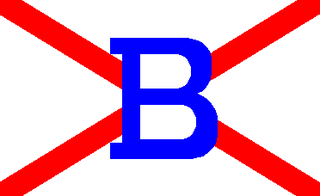
Alfred Booth and Company was a British trading and shipping company that was founded in 1866 and traded for more than a century. It was founded in Liverpool, England, by two brothers, Alfred and Charles Booth. It grew into a significant merchant shipping company with its head office in Liverpool and interests in the United States and South America. The group was broken up in 1964 and the last Booth company from the group was sold in 1986.
The SS City of Manchester was an iron-hulled single screw liner built 1851 by Tod & McGregor, Glasgow, Scotland and the second such ship owned by the Inman Line. It was an improved version of their first ship City of Glasgow which had been launched a year earlier.
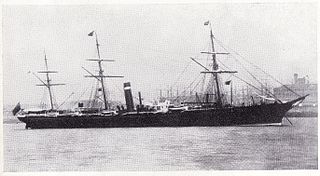
City of Paris was a British passenger liner operated by the Inman Line that established that a ship driven by a screw could match the speed of the paddlers on the Atlantic crossing. Built by Tod and Macgregor, she served the Inman Line until 1884 when she was converted to a cargo ship.
The Liverpool and Great Western Steamship Company, known commonly as the Guion Line, was a British passenger service that operated the Liverpool-Queenstown-New York route from 1866 to 1894. While incorporated in Great Britain, 52% of the company's capital was from the American firm, Williams and Guion of New York. Known primarily for transporting immigrants, in 1879 the line started commissioning Blue Riband record breakers to compete against Cunard, White Star and Inman for first class passengers. The financial troubles of one of the company's major partners in 1884 forced the firm to return its latest record breaker, the Oregon, to her builders and focus again on the immigrant trade. The company suspended sailings in 1894 because of new American restrictions on immigrant traffic.
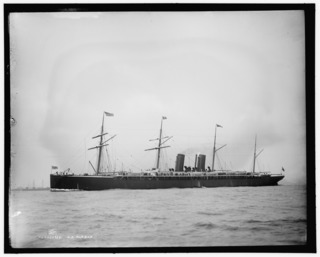
SS Alaska was a record breaking British passenger liner that won the Blue Riband for the Guion Line as the fastest liner on the Atlantic in 1882. She was a slightly larger and faster edition of Guion's Arizona and in 1883 became the first liner to make the crossing to New York in under a week. However, Alaska burned 250 tons of coal per day, as compared to Arizona's already high 135 tons. Built by John Elder & Company of Glasgow, she carried 350 first class passengers and 1,000 steerage. Her passengers included Hugh Simpson Rodham: future grandfather of Hillary Clinton, who travelled in steerage to America with his mother Bella and seven siblings as a toddler in October 1882. As in the case of Arizona, Stephen Guion also personally owned Alaska.
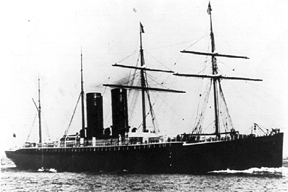
SS Oregon was a record breaking British passenger liner that won the Blue Riband for the Guion Line as the fastest liner on the Atlantic in 1884. She was sold to the Cunard Line after a few voyages and continued to improve her passage times for her new owner. In 1885, Oregon was chartered to the Royal Navy as an auxiliary cruiser, and her success in this role resulted in the Admiralty subsidizing suitable ships for quick conversion in the event of a crisis. She returned to Cunard service in November 1885 and four months later collided with a schooner while approaching New York. All persons on board were rescued before Oregon sank. Her wreck, 18 miles south of Long Island, remains a popular diving site.

The America class was the replacement for the Britannia class, the Cunard Line's initial fleet of wooden paddle steamers. Entering service starting in 1848, these six vessels permitted Cunard to double its schedule to weekly departures from Liverpool, with alternating sailings to New York. The new ships were also designed to meet new competition from the United States.

Harrison Line, officially T&J Harrison, was a shipping line founded by the brothers Thomas and James Harrison in Liverpool, England in 1853. It ran both cargo and passenger services, starting with the import of French brandy from Charente.
Stephen Barker Guion with John Stanton Williams formed the Williams & Guion Black Star Line.
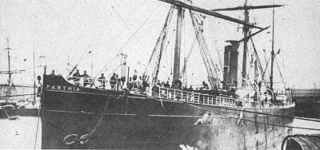
The SS Parthia (1870–1956) was an iron-hulled transatlantic ocean liner built for the Cunard Line by William Denny and Brothers in Dumbarton, Scotland. Her sister ships were the Abyssinia and Algeria. Unlike her two sisters, Parthia was smaller, built in a different shipyard and had a slightly different funnel arrangement. The Parthia was retired by Cunard in 1883 and sold to John Elder & Co., who subsequently transferred her to the Guion Line. After serving with the Guion Line and operating on transpacific routes with the Canadian Pacific Railway Company, she was refit and renamed Victoria.
Guion is a given name and surname.












